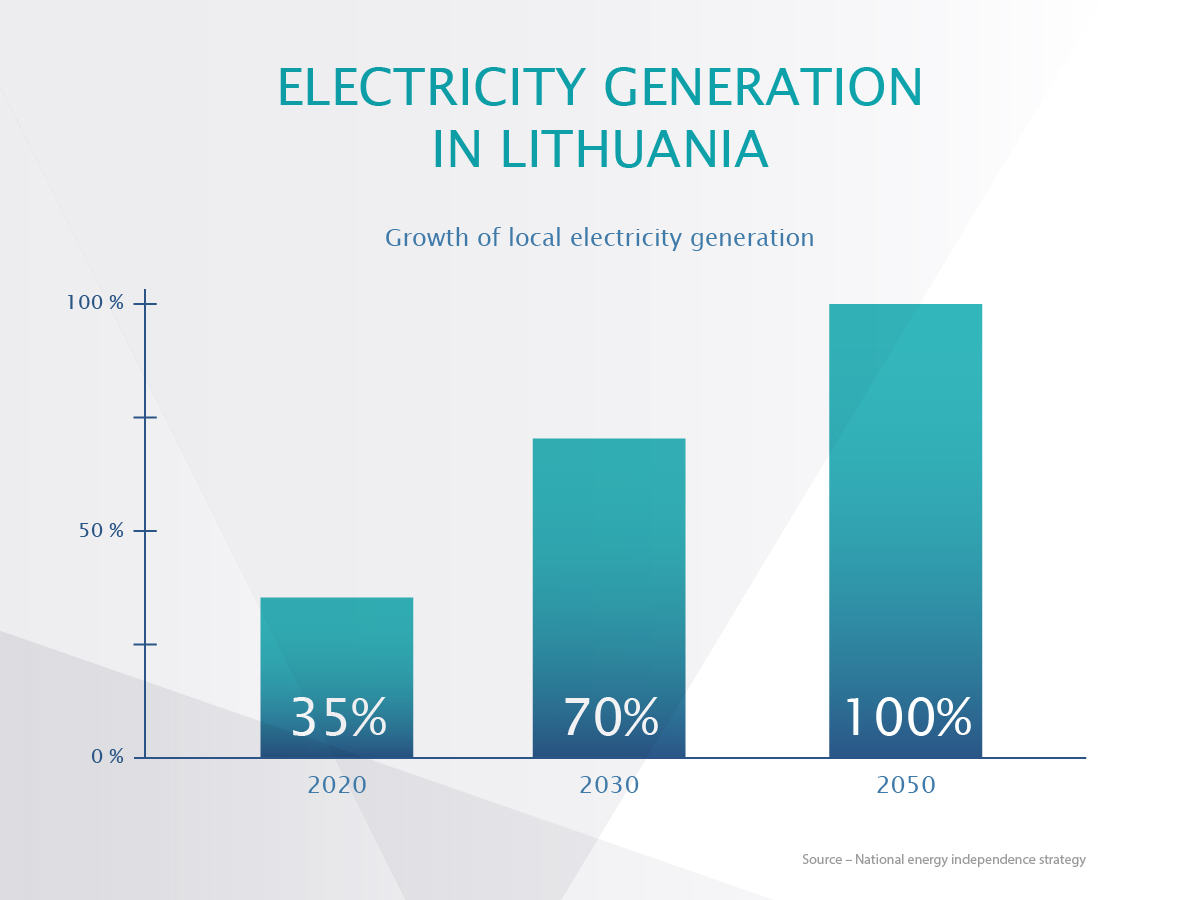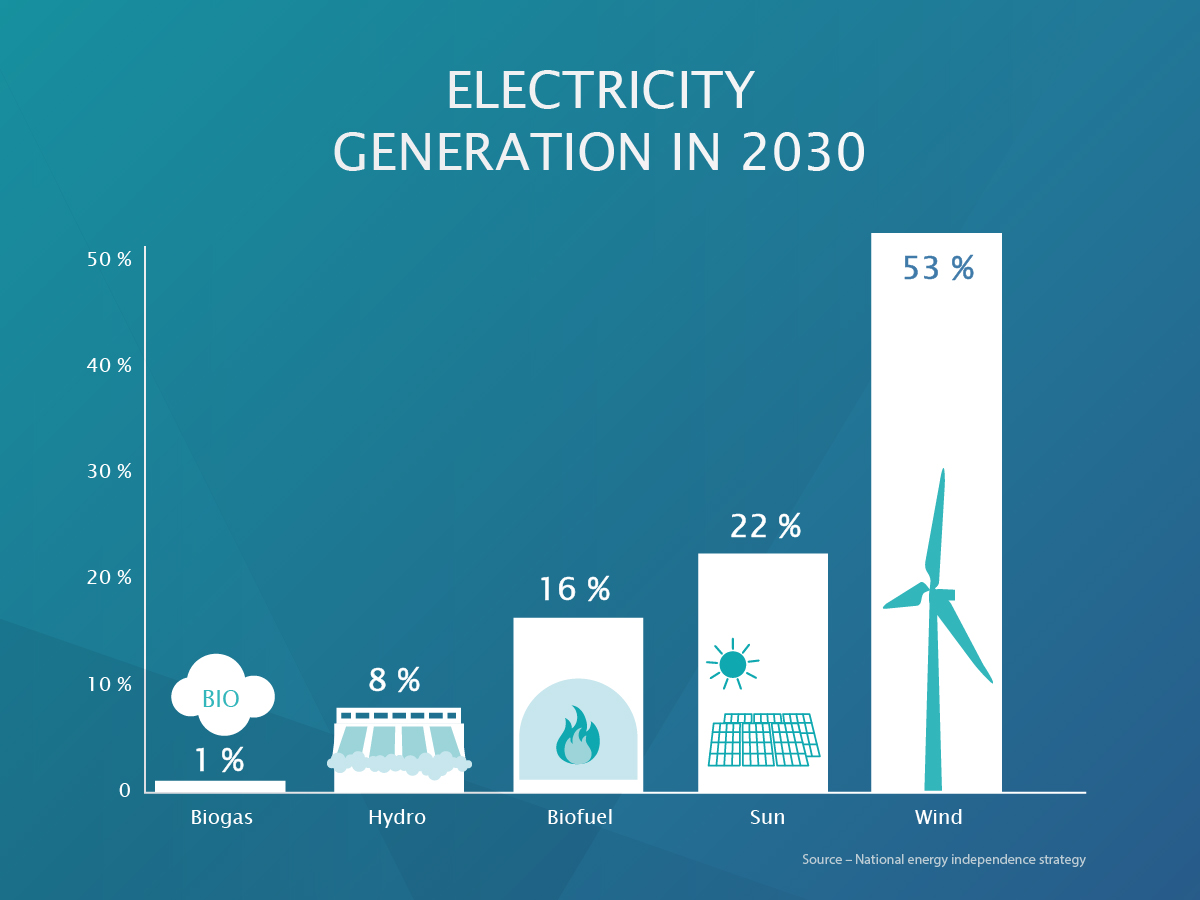The new National Energy Independence Strategy of Lithuania has set the goal of producing all necessary electricity and heat energy from renewable and other non-polluting sources within 30 years. Wind power will make a significant contribution to the development of clean energy, with wind power plants becoming Lithuania’s main generator of electricity.
The National Energy Independence Strategy was approved by the Seimas in June by 103 votes for to none against, with two members sustaining.
The strategy stipulates that energy produced in Lithuania in 2030 should account for 70 percent of total final electricity consumed. A total of 45 percent of electricity and 90 percent of heat energy will have to be produced from renewable energy sources.
In the long run – by 2050 – all necessary electricity will be produced internally, with 100 percent of electricity and heat being produced from renewable energy sources. Less ambitious targets are foreseen only in the transport sector, where renewable sources will account for 50 percent of all fuel consumption by 2050. Renewables are estimated to account for 80 percent of total energy consumption in Lithuania.

The ambitious Strategy outlined how wind will be the main source of electricity generation in the future. It is anticipated that in 2030, wind power plants will produce more than 50 per cent of Lithuania’s electricity. The rest is planned to come from other renewable energy sources, with 22 per cent from solar energy, 16 per cent from biofuels, 8 per cent from hydropower and 1 percent from biogas.
These plans mean that Lithuania has joined other countries in developing wind power, such as Denmark, the Netherlands, Germany, Sweden, Portugal, Spain and Ireland. WindEurope has calculated that wind energy surpassed all other energy sources in Europe last year. Renewable energy resources amounted to 85 per cent, while wind farms accounted for 55 percent of all newly installed power. Last year, they produced 11.6 percent of the electricity needed in the EU.

Now wind produces a fifth of energy
Wind farms operating in Lithuania can already generate about 20 per cent or more of the country’s required electricity on windy days. Throughout the year, wind fulfils an average of 12-13 per cent of electricity demand. This means that electric power generated by wind farms is enough for 700,000 households, or about 1.4 million inhabitants.
By implementing the goals set in the National Energy Strategy, wind should produce more than 30 per cent of the electricity our country needs in 2030, and contribute significantly to reducing CO2 emissions in the atmosphere.